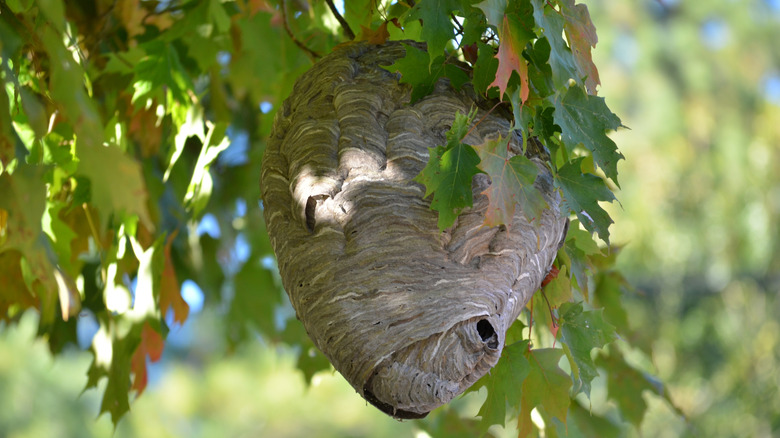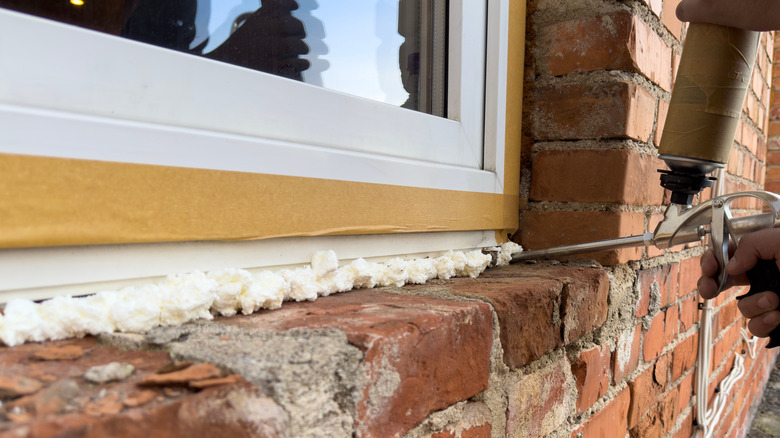Prevent Hornets From Nesting In Your Yard With These Clever Tips
Those who spend time outdoors have somewhat of a love/hate relationship with hornets, bees, and wasps. Gardeners especially appreciate the benefits these pollinators provide. However, no one wants to be stung by them. Hornets, which are actually a dangerous type of wasp, are more onerous than other types of wasps and can be difficult to deal with once established. So, preventing them from nesting is of utmost importance. Luckily, there are a myriad of ways to prevent hornets from nesting in your yard. These methods include eliminating attractants and creating barriers to potential nesting sites.
When it comes to removing things that attract hornets, there are some simple solutions and those that may take more careful consideration. Anything sweet can attract hornets. So, picking up fallen fruit from around your yard, wiping surfaces with food remnants, and keeping trash containers tightly closed are very simple yet effective steps you can take to keep hornets from being attracted to your yard.
However, hornets are also attracted to a number of plants, including some you may wish to have in your yard. If you do choose to maintain flowering plants and fruit trees in your yard, keep them well-trimmed and inspect regularly for signs of emerging hornet nests. It is also helpful to intersperse hornet-repelling plants such as mint, citronella, and lemongrass. Taking steps to attract creatures such as birds and frogs, which feed on hornets and yellowjackets, can also help. Since hornets are territorial, hanging a fake nest like the Decyool Wasp Nest Decoy can also dissuade hornets.
Make it hard for hornets to find a place to nest
Although hornets are best known for building somewhat ornamental, papier-mâché-looking nests that hang from tree limbs, they are also opportunistic nesters. They are known to nest in hollow tree stumps and limbs, attics and walls of houses, and even in the ground. To help prevent hornets from finding an easy place to establish a nest, take frequent walks around your yard and house looking for holes and cracks. Any holes found in the yard should be filled with dirt. Cracks around windows, eaves, vents, doors, and other areas of your home should be sealed with silicone.
While filling these holes and cracks will prevent hornets from using them to build nests, there are some openings in homes, garages, and sheds that should remain open for airflow and ventilation. It is still possible to form a barrier over these openings using mesh or wire screens. Be sure to inspect these screens regularly, however, and patch holes or replace them as necessary.
Unfortunately, even taking these steps are not foolproof. So, if you do find hornets in your yard or home, assess the situation. If the nest is located far away from areas of normal activity, you can just leave it be and wait for the winter chill to do away with it. If, however, you want it removed, it is usually best to call a pest control service, especially if the nest is high in a tree or concealed in a wall or other tight space.

